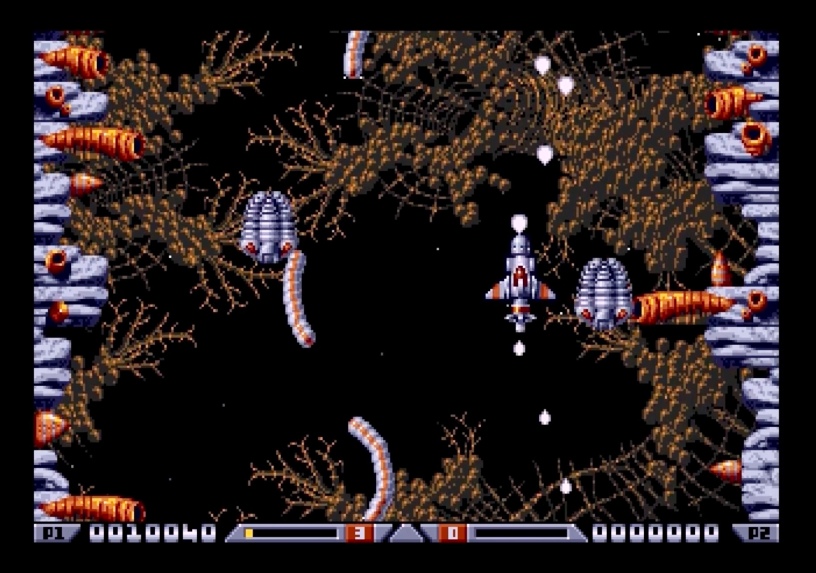The word “Xenon” was very probably the first thing I ever wrote on a 3.5″ floppy disk, but before you tell me that if I pirate software I’m a thief, and thieves will be prosecuted, who’s to say the next word wasn’t “saves” or something equally exonerating! Actually, going back to the Atari ST today, having a bunch of floppies to hand so you can save what you’re playing is one of the most jarring things you come across, but back in the late eighties it was pretty liberating being able to save a game at all!
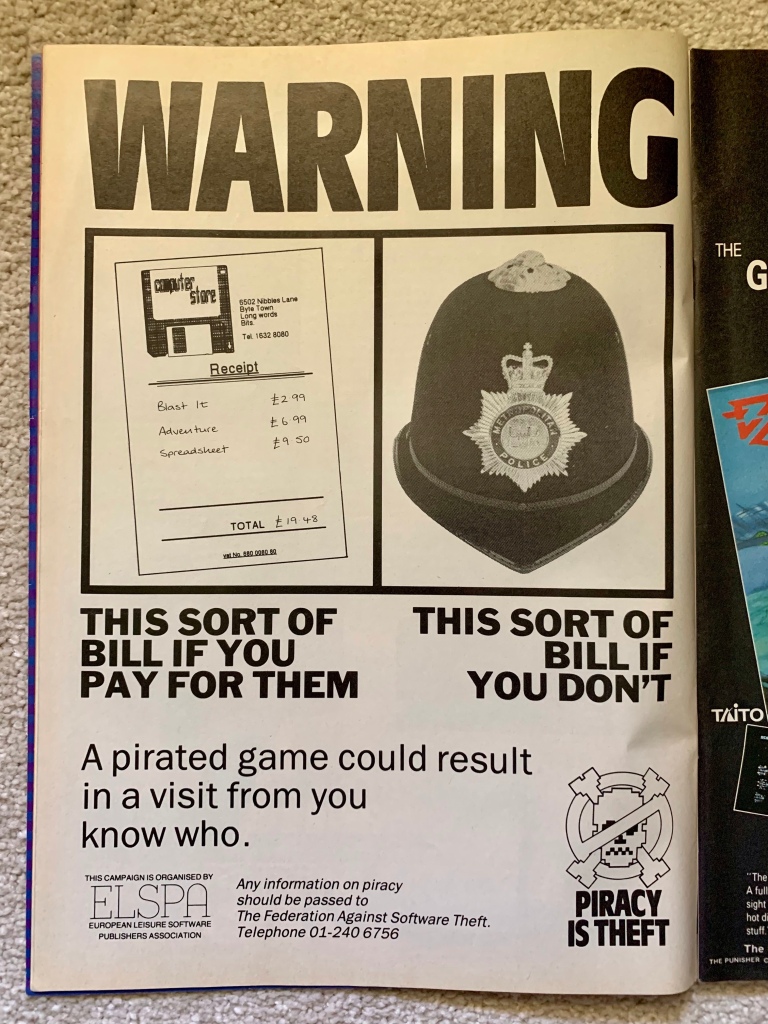
As an aside, as I thumb through the two custom storage boxes I created when we had access to an injection moulding machine as part of A-Level Technology, my mind now boggles at what were obviously my attempts to get the absolute maximum out of the 360kB single-sided or 720kB double-sided available using one type of “disk management” shareware or another! For example, we’ve got a Dragon Ninja demo disk, where I’ve flipped the read/write protection switch off and apparently added Mousetrap and Diablo. With a note to say there’s 34k still available and Disector ST (some utility or other) is now on the disk for Spell It (a spell checker), which also includes Connect 4 game Line-up 4, C-Panel (no idea!) and disk one of Advanced Dungeons & Dragons: Heroes of the Lance, which is odd in itself because I bought the actual game of that. Anyway, all makes trying to micro-manage your Resident Evil 4 inventory to fit the rocket launcher in seem like a walk in the park!
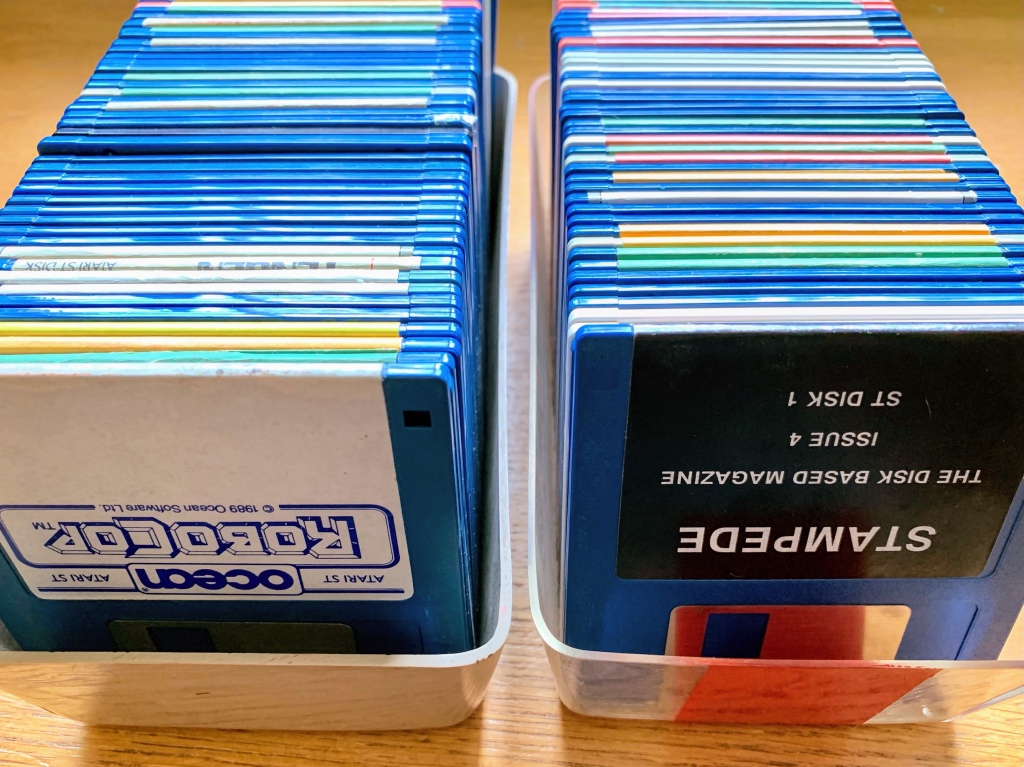
The very first time I laid eyes on Xenon was, like most things ST before I got mine, at my friend Thomas’ house, one autumn Monday evening in 1988 after our weekly Young Enterprise meeting, which was within walking distance of his house so I’d get picked up there after a quick gaming session. This was a charity / school / local company endeavour that taught not-cool kids like us about business, and we ended up making a load of cash selling pipe cleaner worms! All the same, what was I thinking, you and I may be wondering? No doubt the prospect of cash, plus a couple of friends from other schools also going, and possibly some decent representation from the posher of the two private girls schools in Bedford! Like either of us had a chance…
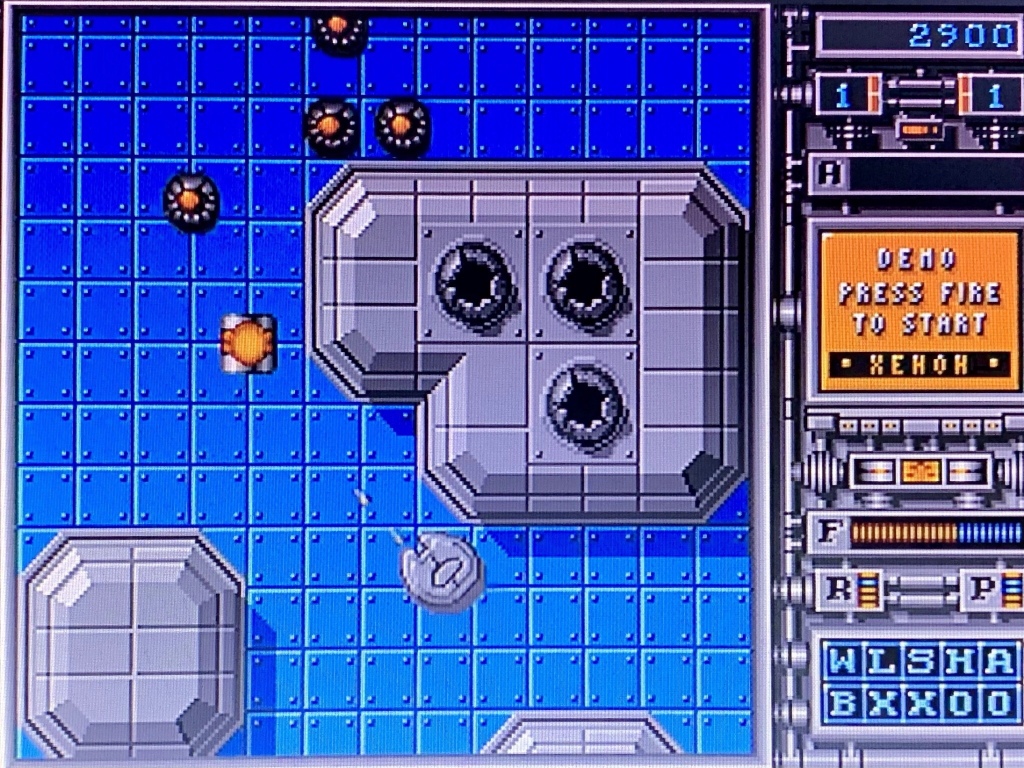
While I might often give the plaudits for selling me on Atari ST to Dungeon Master and Defender of the Crown, Xenon wasn’t far behind, and would end up being the one that stuck with me the most of the three. First and foremost, the level of polish here was absolutely astounding, and, as we’d all later learn, was to become the hallmark of developers The Bitmap Brothers. As far as I’m concerned, this was the first time we’d ever had arcade quality at home, and everything about it was just stunning! Of course, it wasn’t the first time we’d played a vertical shooter, but this was as refined as one had ever been. Four stages, shoot everything, collect power-ups beat the end of level boss; standard stuff, though in some stages you’ll be shooting stuff from the ground as well as from the air – your choice. It’s nicely tough, and each stage will take some learning – especially the bosses – and you’ll have the absolute best time doing it!
The graphics are equally joyful to behold, beautifully drawn, animated (especially the explosions!) and those metals… This was the most metallic-looking game I’d ever seen! I know all about the Amiga version and its fanciness, but this is probably my favourite bit of Atari ST music too, narrowly beating the Bitmap’s Speedball, which came from the prolific David Whittaker, who you’ll find all over the best of eighties and nineties gaming tunes! To quote my own Top 25 Gaming Anthems – Part 1 (here), “this one is all synth multi-melodies and harsh stabby string things over this Euro-disco rhythm that simply shouldn’t work – especially when the stabs completely intentionally drop slightly out of time – but it’s all just right!” Well said, and if it wasn’t the most original, it was definitely the most amazing shoot ’em up ever!
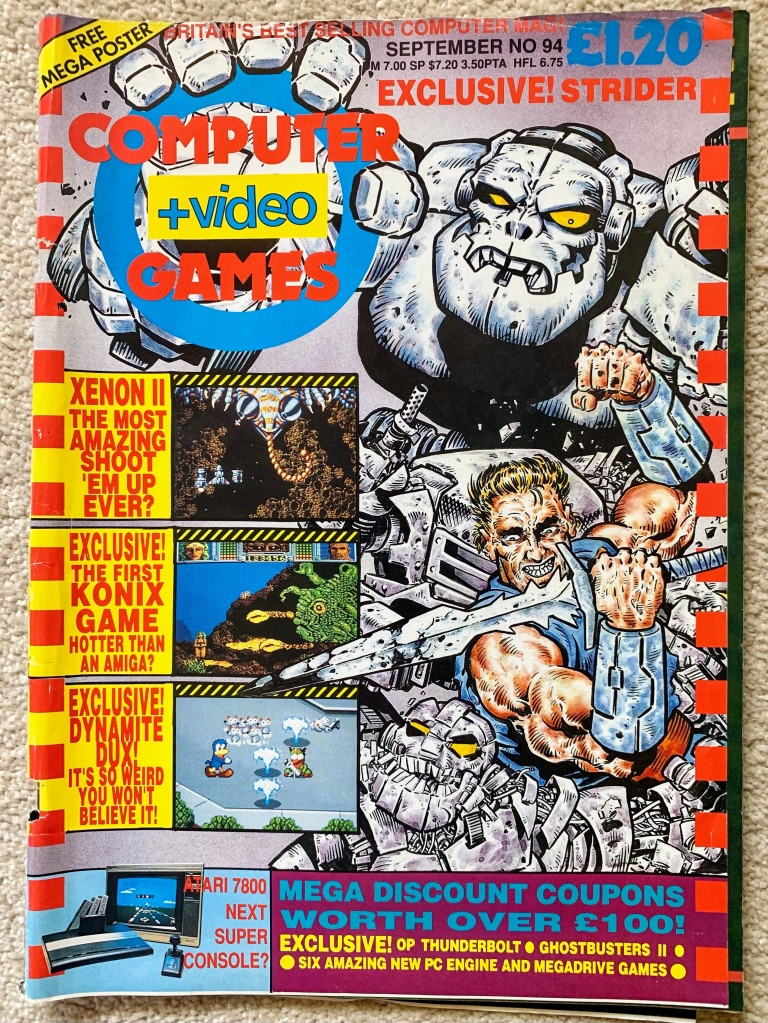
A bit over a year later, enjoying the last of my last school holiday, the cover of Computer & Video Games magazine asked, “Xenon II – the most amazing shoot ’em up ever?” All sounded familiar, and inside they confirmed it, awarding 94% on ST and 96% on Amiga, for the extra bits of music I guess. And we’ll come back to that music, but so far I’m just about sold on Xenon II: Megablast with or without it – I love the original and my favourite magazine loves the sequel. But there’s no truer test than trying it out yourself, and here I am in WHSmith in Bedford leafing through a copy of the October 1989 issue of ST Format magazine, and it’s only got a Xenon II demo on the cover! Since getting an ST, I’d obviously abandoned Crash, Sinclair User or Your Sinclair as the second magazine I’d get each month, and now it was usually ST Format, ACE, The One or Zero magazine when it launched shortly after (more here), and that choice was generally down to what was on the cover disk. Flicking through my cover disks now, I obviously picked up the very dry Atari ST User and also dry but more games-focussed ST Action a couple of times too. A bit later again, there was also a short-lived disk-based magazine called Stampede, which was a pricey £3.99, but you were getting two disks that included a full free game every issue, demos, public domain stuff, reviews, tutorials and more… And firing up some of them again now, I’ve just discovered that issue 3 includes the full Mr Heli, my new favourite PC-Engine and ZX Spectrum shooter! How on earth did I miss that for three decades??? They also gave away Microprose’s Dark Side, Trivial Pursuit and several other full-pricers… Actually, £3.99 wasn’t bad, but you can see why it was short lived!
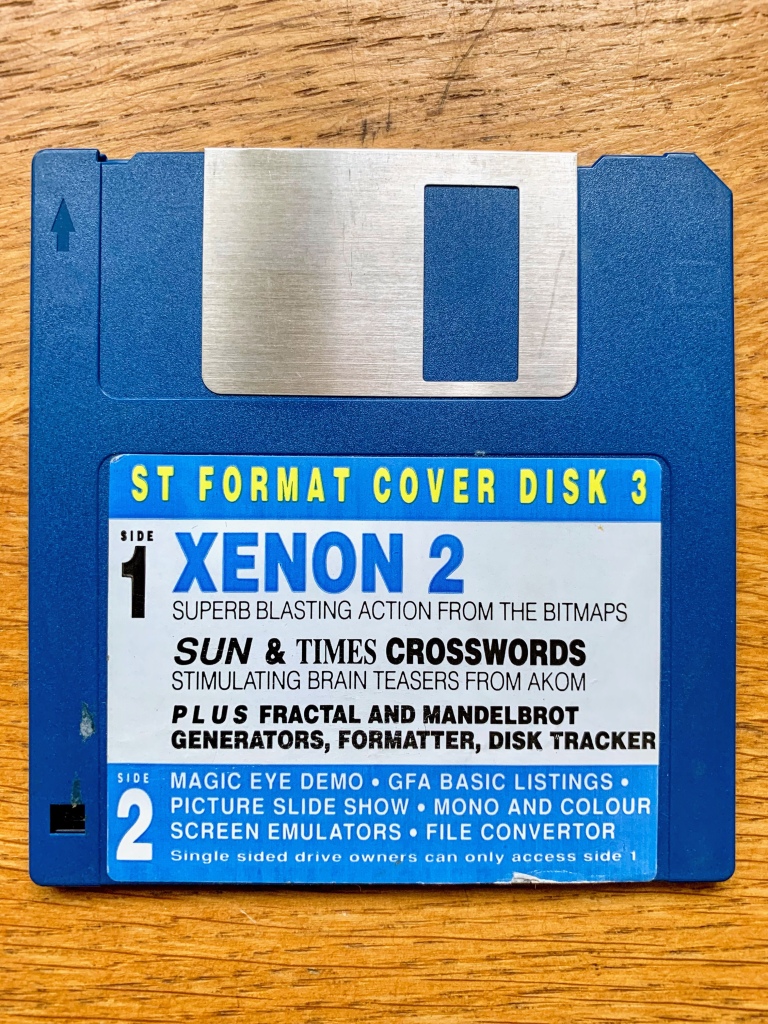
ST Format offered a more traditional cover disk, and theirs was very much a reflection of the magazine, which covered games, but would also go in-depth on programming, productivity tools, graphics creation, music creation and full electronic projects like building a disk drive head display, and to an A-level Technology nerd like me, all of that was right up my street! It’s worth taking a look at this month’s cover disk, because it gives a great snapshot of what these were all about, especially because this month also includes 16-bit public domain darling the fractal generator! You’d be rounding-up to 800K of demos, games and utilities, but as we’ve already learned, this was dependent on you having a double-sided disk drive – if not, you only got side A and not side B (meaning no fractal generator in this case!), but all wasn’t lost because if you sent in a cheque or postal order for £1.75 they’d send you the other side too in return! Assuming you’re double-sided though, we’ve got the Xenon II demo (which also got a Format Gold award elsewhere in the mag); there’s Sun Crossword and Times Crossword, depending on your intellect (paraphrasing their words not mine); and rounding out side A, there was a utility to go with that disk drive project, and a backup utility specifically for making a backup of this disk it says. Over on side B, there’s not one but three fractal generators – I probably spent more time with this running on my ST than anything outside of Kick Off and Elite, but mainly because it would take days to create one of its random landscapes! Then you had some programming tutorial files, a slide show utility, a picture compression utility and a colour screen emulator for monochrome displays and vice versa. Absolutely classic cover disk!
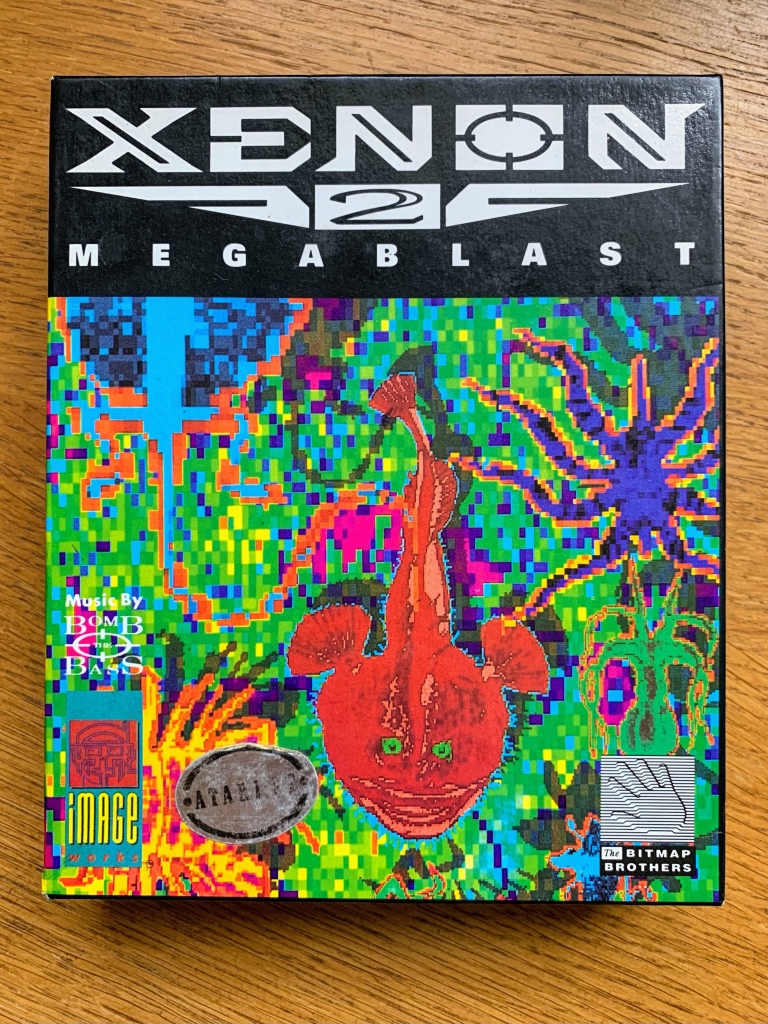
As mindblowing as it turned out to be, there was only so far that Xenon II’s demo was going to take you though… And that was to your favourite local game shop, because you were only getting half of the first level before it looped back to the start! But it clearly did its job – like a crack dealer giving out free samples – and very shortly after I was the proud owner of another 18x15x3cm lump of Atari ST cardboard box housing a couple of disks and 25-page English / Italian manual sitting on top of a giant piece of foam! The manual – like all Bitmap Brothers releases – is a real treat, not only telling you how to play, but also going into the ridiculous, bombsatic lore that’s brought you here from the original game, and where it’s taking you next! And that’s a good place to jump in… They tell you that no one likes a bad loser, and no one comes more universally despised than the Xenites. For a thousand years they’ve been plotting revenge for their humiliating defeat in the last Galactic Conflict, and now the very fabric of time is in danger. They’ve planted five time bombs through history and it’s up to you to save the day and the universe. “The last time you met it was a playground scrap. This time it’s war.”
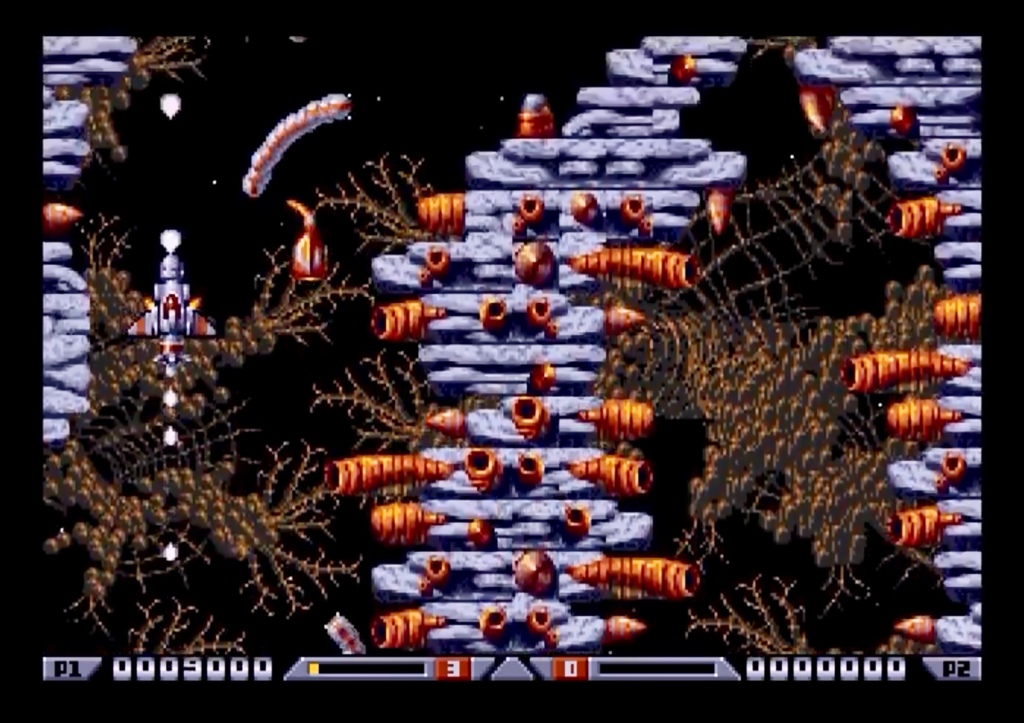
This journey through time follows the process of evolution through five vertically scrolling levels. Which the manual bizzarely refers to as horizontally scrolling. Anyway, each has its own scenery and lifeforms, from prehistoric lowlife to metallic mayhem in the centuries to come. Unfortunately all of these lifeforms have beens screwed up by the time bombs planted at the end of each level, mutating everything into crazed aggressors that you’re going to be blasting away at in your ship, The Megablaster, initially equipped with a thruster that goes back a bit as well as forward, a basic but very upgradeable blaster, and a shield that’s going to run down until you’ve lost all three of your lives. As jagged-edged and uninviting as is often looks, the scenery doesn’t damage your ship, unless you get stuck in a dead end and crushed as everything keeps scrolling! We might move away from the ST and onto other versions later, and we might come back to that! It all gets more maze-like as you progress, and you don’t really want to be going backwards for long, so like the patterns of the lifeforms, you’ll also be learning which way you want to go when the scenery splits.
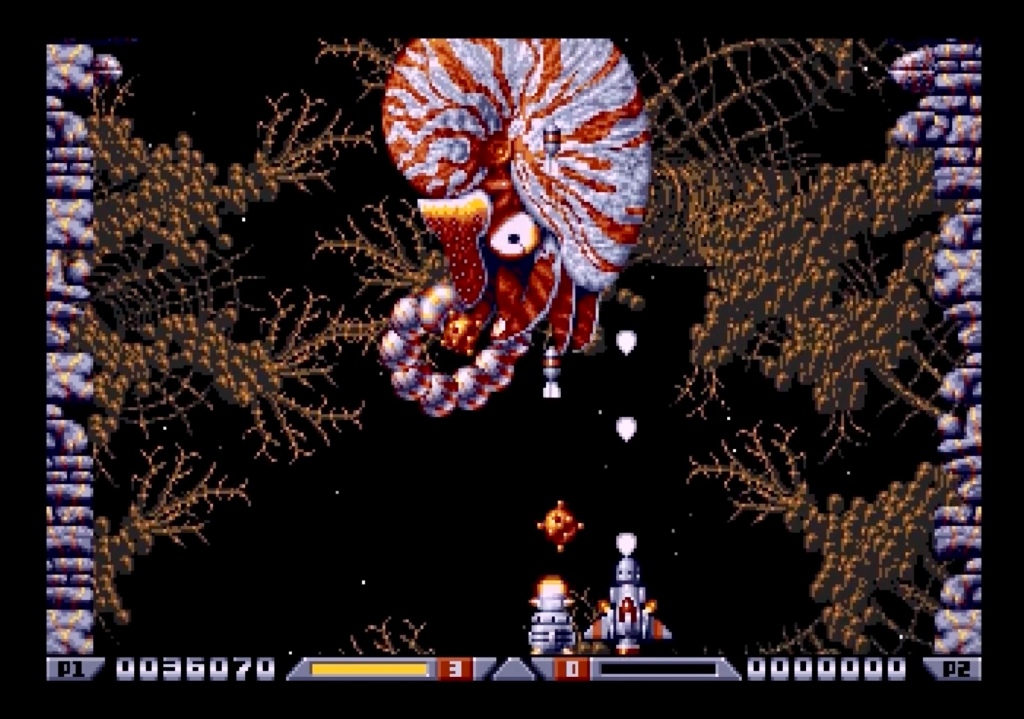
Every level ends with a big boss thing, and later on they’ll be appearing all over the place on top, but the one at the end is going to be your key to defusing those pesky time bombs. The first boss, the nautilus shellfish with its mine-spitting apendages, is without doubt one of the most iconic bosses of the 16-bit era – up there with that first level guy from actual horizontal shooter R-Type. The level of detail on that shell and its exquisite colouring are just unforgettable, and while the giant spiders, snakey things and more mechanical monstrosities that follow are big and really cool and stuff, they never quite hit that level one peak.
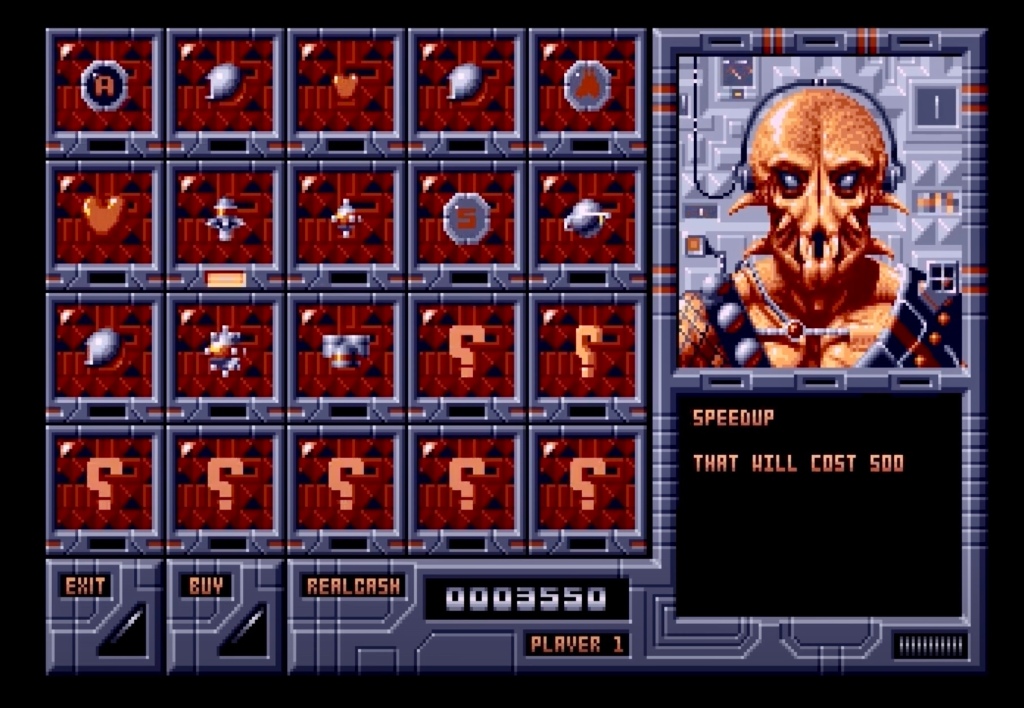
I get why the best bosses in Xenon II and R-Type are both in the first level though, because most people aren’t going to see much of the rest! It’s hard, although as we’ve said, it’s also learnable through repetition, and put your mind to it and you’ll be seeing the end of level two at least! And there’s all those upgrades too – occasionally you’ll see capsules floating about the place, and they’ll have power-up tokens in them, and you’ll also notice that killing stuff leaves cash behind, and twice per level you’ll have the chance to buy stuff or sell anything you’ve already picked up in Crispin’s Swop Shop! Equipment includes weapons such as a side shot, smart bomb or Super Nashwan Power, which provides ten seconds of total destruction. There’s health potions, speed and power boosts, an electric wrecking ball attachment and even an autofire function – and your thumb might thank you for that before long! Or if you’re minted, you could buy a really cool but generally useless dive function that lets you briefly dive into the screen and under all that parallax scrolling; and for the crazy wealthy, there’s the even more useless Bitmap Shades, which seem to make the screen slightly darker! You can also chuck cash at Crispin for mostly reliaible advice about how to play or what weapons to use in different areas, so isn’t a bad idea once per level at least until you know what you’re doing. There’s attachments too – a Megablaster for your Megablaster… I guess they forgot that they’d also called the ship Megablaster, but anyway, you can bolt up to three of these laser beasts to the front of your ship. You can protect your back-end too, with a rear shot that “clamps onto your behind and protects your rear from fear.” Finally, a mine dropper lets you hold down fire and leave a trail of floating and exploding death behind you.
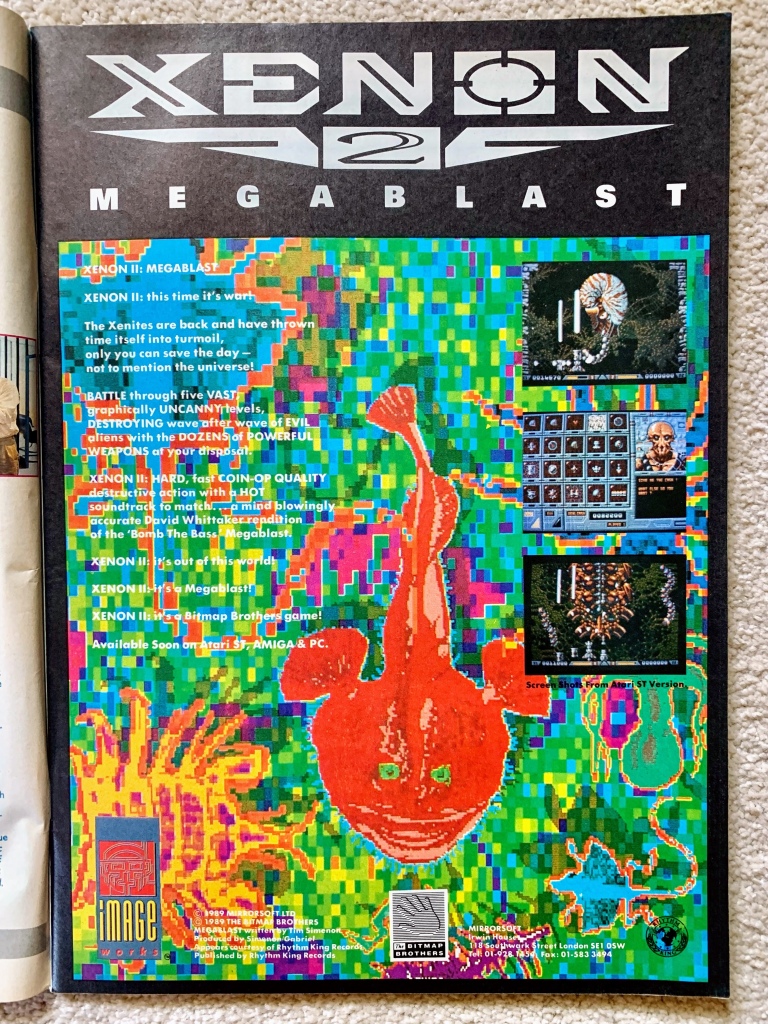
That’s an awful lot of shooting stuff that you’re going to be doing before you see most of that though, but work out the first few bosses and you’ll be rolling in cash. You will pick up a rear-shot on the way, but initially you want to buy a side-shot as soon as possible, and autofire is going to mean you’re killing more and getting more cash, as well as saving you from claw-hands! You don’t really want to be losing much health early on, so top that up if you need it, but otherwise you can’t beat a bit of Super Nashwan Power in reserve too. Then you want lasers, more lasers and more health. And from there, if you’re still alive, just go crazy and get that screen filled with awesome firepower! I know that like its predecessor, Xenon II wasn’t the most original shooter ever when it appeared, even if it was what could be described as definitive, but I can’t remember anything else that offered these kind of immense weapon loadouts at the time!
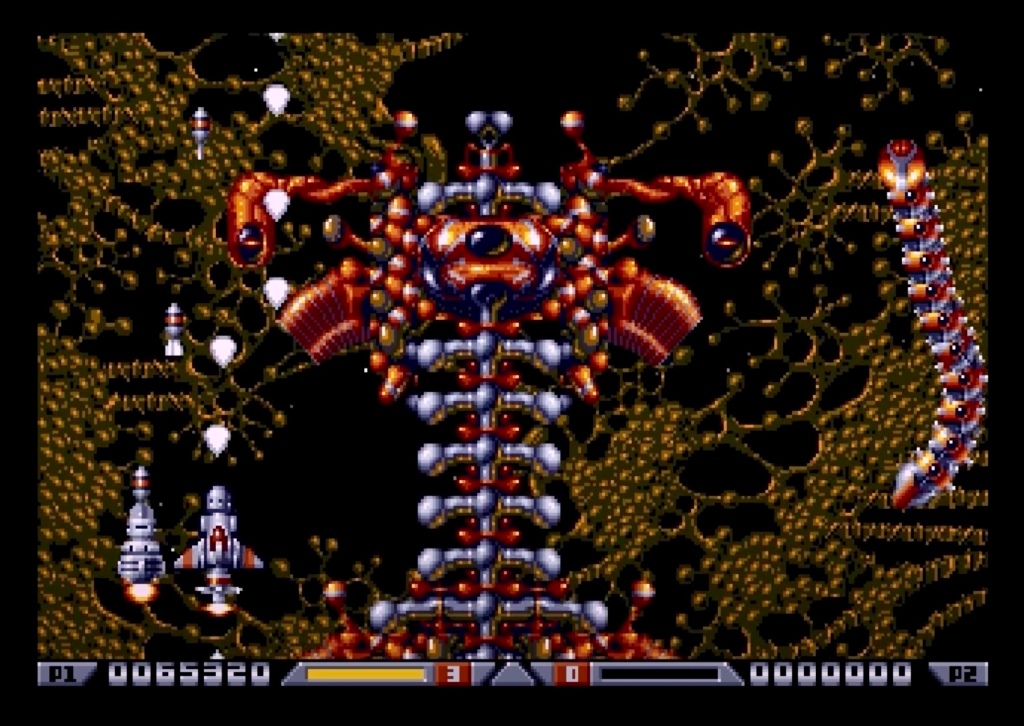
What was unique was the look. If the original had introduced arcade quality into the home, this was absolutely nailing it, and to this day I really think it’s the best looking game that ever appeared on either the ST or the Amiga. The ambitious imagination behind the time-travelling concept, with its starfield-backed intricate mesh of evolution built on the smoothest of parallax scrolling is still a joy to behold. The swarms of enemies that start by just creeping you out with insect-familiarity and later terrify with mechanical intent are immactulately designed, detailed and animated, as are all the explosions, the weapons and other effects that the first game also excelled at. The colour palette is also a delight and is perfectly placed in each scenario, creating realistic textures from which rich, organic details simply pop. And it’s all so relentless that you’ll feel everything closing in on you even during the odd short moments of respite, which is helped by the constant speed and lack of slowdown even when the screen is filled with the opposite of respite! As an aside, by concidence, Taito’s wonderful arcade platformer New Zealand Story came out on ST at just about the same time as Xenon II, and I reckon that comes a close second as best looker on the platform – now there’s a colour palette and a half!
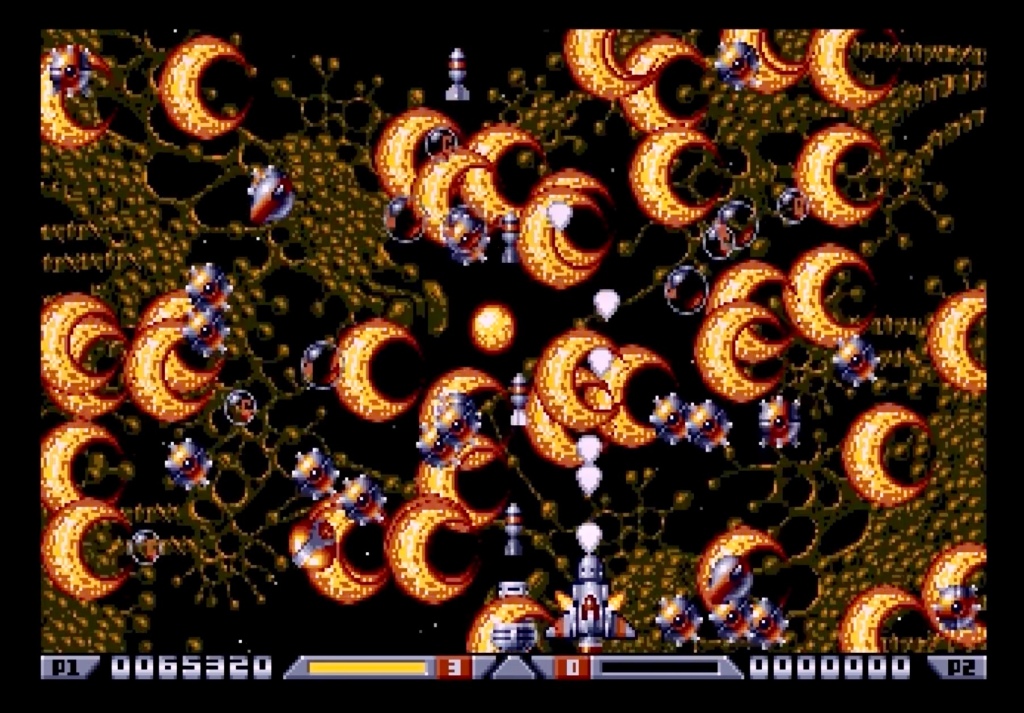
There’s a pleasing density to the sound effects that blip, blast and explode enough to mostly drown out the bombastic soundtrack, which actually is very, very good and a perfect fit for a vertical shooter, but at the time annoyed me for having Bomb the Bass plastered over the box! I’m not sure that musical snob was the right word (although it would be now!), but back in 1989, as uncool as I was, there were at least some signs of life from the music I was listening to! As thrash was becoming stadium metal, Metallica’s …And Justice For All and Slayer’s South of Heaven from the previous year had inspired a deeper exploration into metal, and the more extreme the better, with stuff like Napalm Death’s From Enslavement to Obliteration, Bolt Thrower’s Realm of Chaos and Death’s Leprosy sowing seeds for a lifelong love of what would emerge for both me and the genre into black metal in particular. And that meant I had no time for Bomb the Bass and rubbish like that, to the point of it actually being offensive to me, and therefore I didn’t appreciate having it shoved down my throat everywhere the game was mentioned!
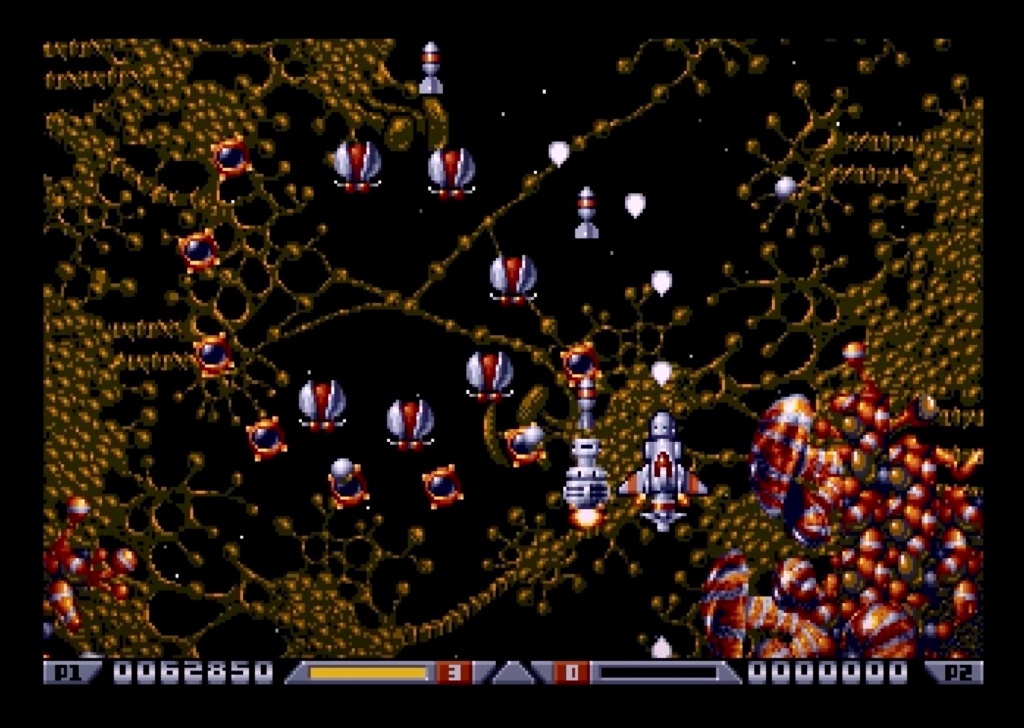
With the benefit of a lot more age and a bit more hindsight, we’ve got a pretty good theme tune playing from the loading screen onwards though! It turns out that the Megablast subtitle isn’t just where the name of your ship and potentially some of it’s clip-on accessories comes from, but it’s actually lifted from Bomb the Bass’ track Megablast (Hip Hop on Precinct 13). Our musical hero from the first Xenon, David Whittaker, is on arranging duty this time, sampling the original track up to the title screen, then stripping it down a little while the game is playing. I think the Amiga got the whole original track, hence the slight preference when they were reviewed together.
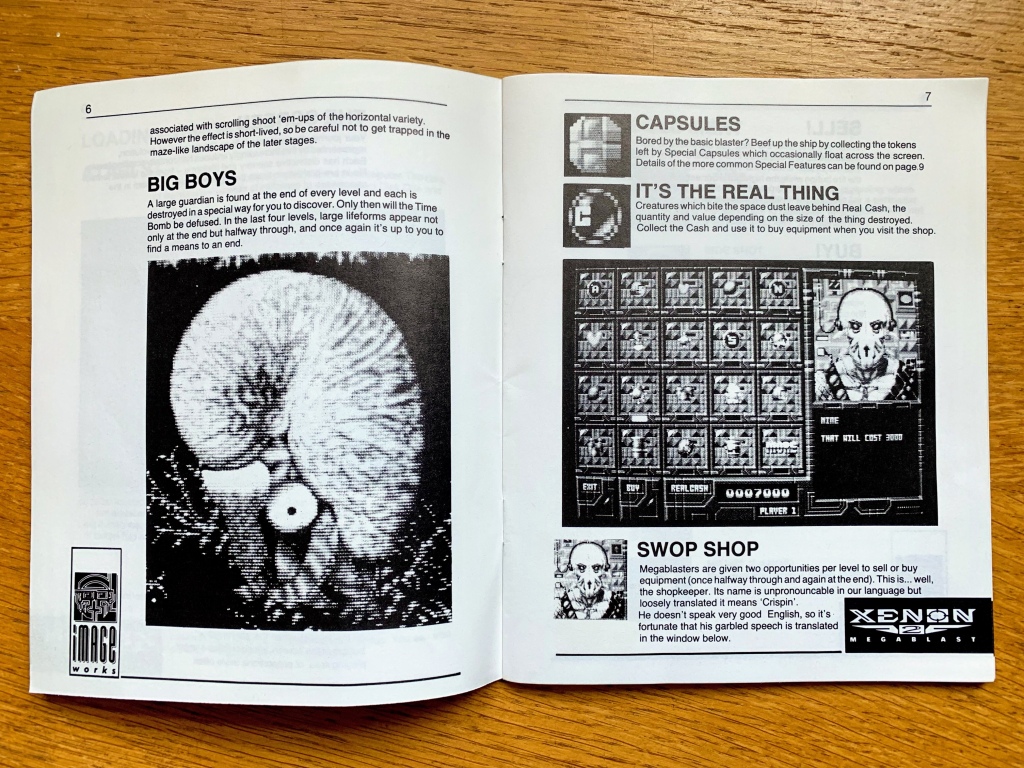
Xenon II would get ported to Sega’s Master System in a stripped down but pretty playable form at the end of 1991, and then to the Mega Drive or Genesis in 1992, and this one’s interesting because it’s the version I played a lot of in the years while my ST was in hibernation, but until I went back to the original, didn’t realise quite how much it suffered in conversion and now struggle to go back to! First and foremost, those gorgeous intertwining parallax meshes look blocky (and brown) enough for the Commodore 64 to have spat them out, but would probably have done a better job of making them scroll! Can you believe the ST is being praised for its smooth scrolling over this stuttering mess?!?! Getting stuck on the scenery is also a regular occurence that I don’t recall ever experiencing elsewhere, and no amount of backwards thrust is going to pull you clear – it’s reset the system or bust! The music sounds a bit off here too.
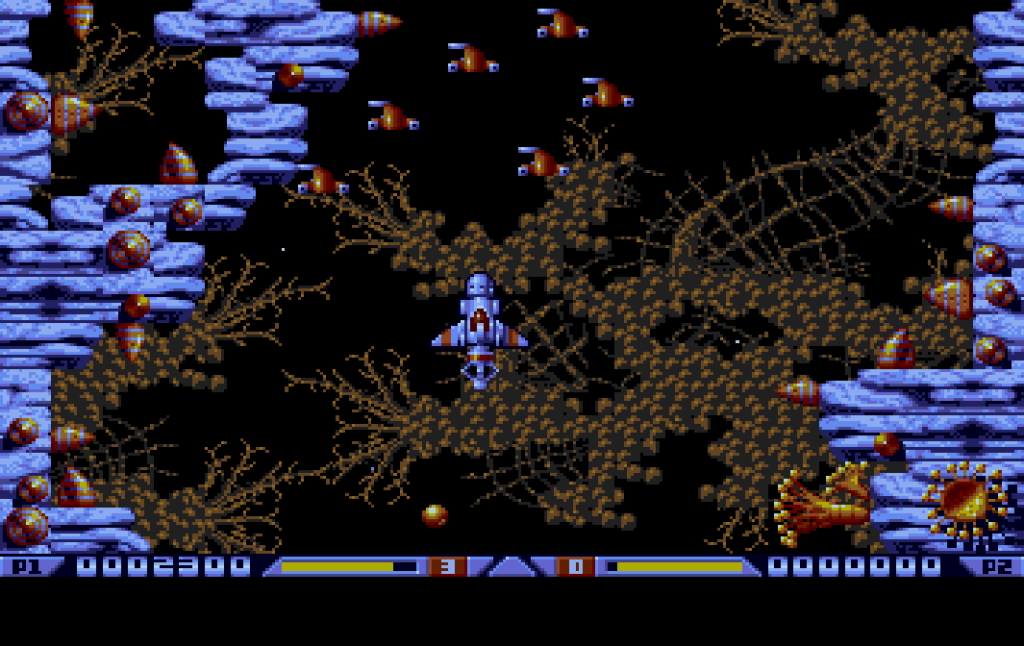
On one hand, if you were desperate to play Xenon II and only had a Mega Drive, you’d be happy enough, but on the other, that system is stacked with wonderful vertical shooters – Truxton, Mega SWIV, Twin Cobra, Elemental Master, M.U.S.H.A… And they’re just the ones a non-expert like me can think of off the top of my head before we even dive into anything horizontal… You hopefully won’t notice this, but writing that sentence just sent me on a Mega Drive shooter (mostly Thunder Forces) odyssey for the last hour! Back to Xenon II, there were also versions on weirdo machines like the CDTV, Archimedes and Atari Jaguar, but the other one I did spend quite a lot of time with when it came out towards the end of 1992 was for the Nintendo Game Boy. All that stuff we discussed before about buying a side-shot first – forget it! You want the speed ups because the ship crawls in comparison to other versions, but once that’s sorted, this isn’t bad at all! It’s understandably more stripped-down than even the Master System, but apart from that it feels like Xenon II and does a great job of sounding like it too!
Let’s head back to September 1989 C&VG’s cover question – the most amazing shoot ’em up ever? As much as I love it, and probably associate this game with the Atari ST more than any other, including my number two favourite game ever Kick Off, and not far behind Elite, it’s not quite my favourite shooter. That would be 1942, for it’s more frantic action and more personally attractive World War II setting. For vertical shooters, it would be next though, and overall for any direction scrolling shooters, it’s a toss up with either arcade P-47 or Thunder Force AC. Without doubt a stunner then, and still very much a stunner now!

